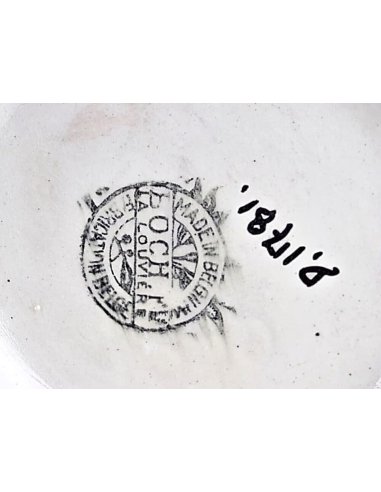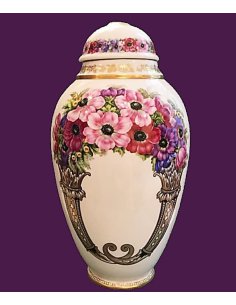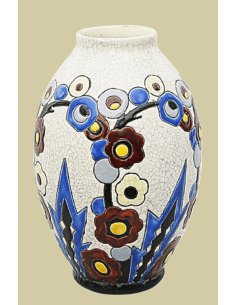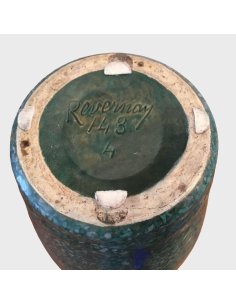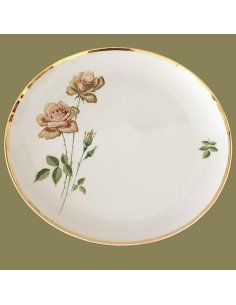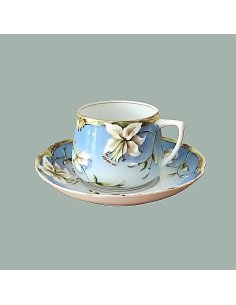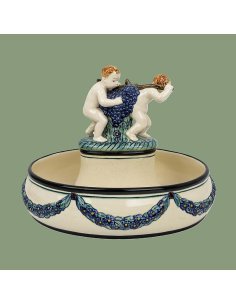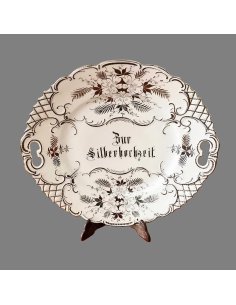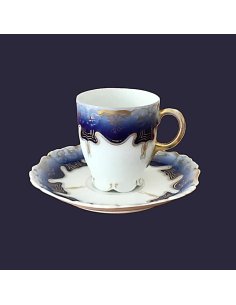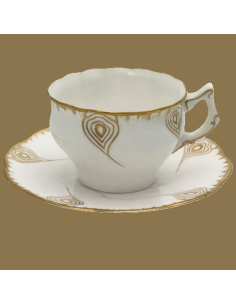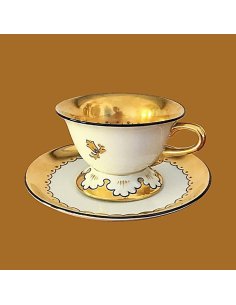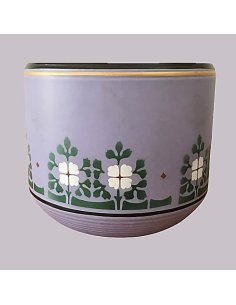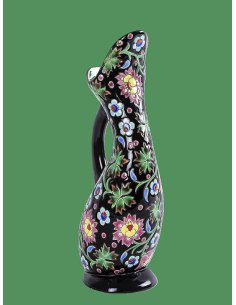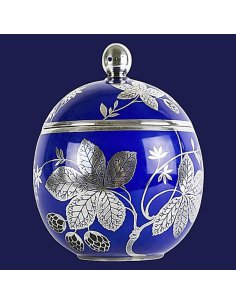Art Deco Vase – Boch Frères La Louvière, Decor 1781
This elegant Art Deco vase was made by the renowned Belgian manufacturer Boch Frères Keramis in La Louvière. The hallmark "Boch Frères, La Louvière" and the precise decor number 1781 attest to its authenticity and allow for a precise classification within the Art Deco era.
This piece is an excellent example of the ceramic design language of Art Deco art from the late 1920s to early 1930s. Crafted from glazed ceramic with gold and silver enamel decoration, the vase features a stylized, plant-like geometric motif.
The balanced geometry, combined with metallic glazes, testifies to the stylistic signature perfected at Boch Frères under the direction of Charles Catteau.
Boch Frères and Charles Catteau in Art Deco
In the 1920s and 1930s, Boch Frères Keramis experienced its artistic heyday with the Art Deco movement. The manufactory became internationally renowned for its innovative forms, bold colors, and stylized decorations. The French designer Charles Catteau, who joined the manufactory in 1906 and soon took over as artistic director of the decorative ceramics department, was largely responsible for this creative upswing. Under his leadership, decorative ceramics developed into an independent art form. Catteau combined industrial production with avant-garde design, incorporating influences from Japanese, African, and geometric ornamentation into his designs.
Catteau's workshop created a variety of enameled vases, bowls, and plates, which today are among the most sought-after items among collectors of high-quality ceramic art. This vase with 1781 decor is exemplary of the innovative spirit and artistic level that Boch Frères established in European Art Deco.
About the Manufacturer: Boch Frères Keramis
Boch Frères Keramis was one of Belgium’s most influential ceramic manufacturers of the 19th and 20th centuries, renowned for its Art Deco ceramics and innovative design language.
The factory known as Kéramis was founded in 1841 by Victor Boch in Saint-Vaast (renamed La Louvière in 1869), where he remained director until 1881. In 1844, the business became a partnership under the name Boch Frères, led by his sons Eugène and Victor, and his son-in-law Jean-Baptiste Nothomb.
Boch Frères was part of a broader family network, which included Boch Frères in Septfontaines (renamed Villeroy & Boch in 1855) and the Boch factory in Tournai (1851–1891).
Over time, the company underwent several name and structural changes. In 1948, it became Boch Frères S.A.. A new sanitary ware division was added in 1949 and experienced strong growth between 1955 and 1965. However, the construction of a new plant in 1972 came too late to capitalize on the booming market of the 1960s. Despite restructuring efforts and public financial support, the company’s decline continued after 1974.
Boch Frères S.A. was officially liquidated in 1985, but its artistic and industrial legacy lives on through collectors and museum collections – particularly through the Art Deco designs of Charles Catteau, which brought the company international acclaim.
Quelle: royalboch.com


